The Free State’s forgotten soldiers: The National Army monument at Glasnevin.
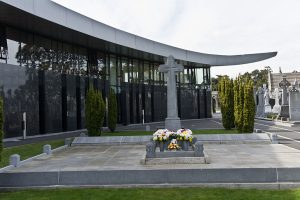
National Army dead at Glasnevin Cemetery, Dublin, by John Dorney
Perhaps the most famous and most visited grave at Dublin’s Glasnevin Cemetery is that of Michael Collins.
‘The Big Fella’ National Army General, head of the Provisional Irish government and erstwhile driving force behind the independence movement, was killed in an ambush at Beal na mBlath on August 22, 1922, during the Irish Civil War. His grave at Glasnevin is often adorned with fresh flowers, even today.
The casual visitor probably notices only in passing, however, that Collins’ grave is flanked by the National Army memorial, containing the names of the 183 Free State soldiers who are also buried in Glasnevin.
Theirs is one of relatively few pro-Treaty memorials in Ireland. While the Republican or anti-Treaty side dotted the country in later years with memorials to their Civil War dead, there are remarkably few monuments to the 800 or so National Army soldiers who died during the conflict over the Anglo-Irish Treaty.
The Free State authorities had been keen to celebrate their ‘martyrs’ in the heat of the Civil War, but their ardour for commemoration soon cooled. The Free State dead were awkward, too difficult to place politically.
The graves of National Army soldiers at Glasnevin were unmarked for many years, the monument only being erected in 1967.
As Anne Dolan wrote, ‘How does a mother, a father, a wife remember their Private, their brigadier, their general, their son or husband killed in the street, shot by mistake, when they have died in the wrong war, against the wrong enemy and when the next government looks on them as traitors? Can a father still say his son died for Ireland when he had died to secure a compromise?’[1]
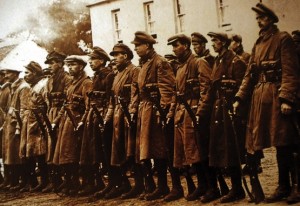
Political reticence was coupled with financial niggardliness in the post-Civil War years to mean that the memory of the National Army soldiers buried at Glasnevin was particularly shabbily treated.
First of all, their graves were never individually marked and the government in 1924 was not even sure how many soldiers were buried there, estimates ranged from 115 to 189. The government was reluctant to even pay for the burials and commemorative wreaths. It was not until 1967 that a monument was erected to the National Army soldiers at Glasnevin, though the 183 names on it probably does not cover all the soldiers buried there.[2]
As a result of this strange amnesia among pro-Treaty authorities about the soldiers who died on their side, we know relatively little about the experiences of the average National Army soldier in the Civil War.
But today with extensive access to searchable online resource such as the Military Service Pension records, as well digital newspaper archives such as the Irish Times, it is easier than ever before to piece together the stories of the Free State soldiers who are buried at Glasnevin.
Identifying the soldiers buried at Glasnevin
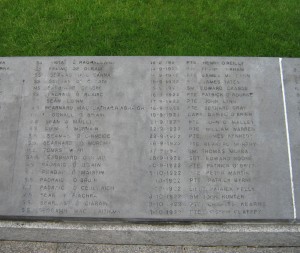
It was possible to identify some of the circumstances of 170 of the 183 names on the Glasnevin monument and with the full digitisation of the military pensions, the files on the remaining men are likely to come online in the near future.[3]
One hundred and thirteen of the soldiers were privates, 48 NCOs and 22 were officers, the most senior of whom was Colonel Commandant Thomas Mandeville, killed, along with Captain Michael Vaughan, on Leeson Street in Dublin on the first day of the Civil War, June 28th, 1922.
Most of the dead soldiers, 128 out of 183, were, unsurprisingly, from Dublin. There were clusters of soldiers from around the north and south inner city areas, working class neighbourhoods that had long been recruiting grounds for the British Army. The next largest place of origin was Belfast, birthplace of twelve of the men on Glasnevin monument. The Belfast men had largely fled the North in the wake of the introduction of wholesale internment of Republican suspects and violence against Catholics in May of 1922. Several hundred of them were recruited into the pro-Treaty National Army.
Out of 141 identified soldiers buried at Glasnevin at least 99 were from Dublin. Belfast was the next most common place of origin.
Twelve more of the dead at Glasnevin came from Britain, seven from England and five from Scotland, some of whom, again, were IRA men deported after the Treaty such as Patrick Lowe of the Liverpool IRA, who was killed on Capel Street, Dublin on July 1st, 1922 by anti-Treaty forces trying to relieve the Four Courts. But some others had military experience but no obvious Irish connections, such as Albert Cottle of Weymouth, who was killed by a landmine in Cork in August of that year.[4]
The remainder came from ten other Irish counties. (see table below).
While civilian occupation of the soldiers was not always recorded, where it was, most came from working class backgrounds. The most common job was ‘labourer’, along with now vanished manual jobs such as ‘carter’ and ‘ship’s calker’. A number worked in Guinness or Dublin’s other breweries and other factories. Some of the Belfast men had worked at that city’s shipyards.
They were not all of proletarian origin however. Some men of middle class origin signed on as private soldiers. The dead included a legal student, an insurance agent and at least one businessman.
Age was not recorded in most pension files but it seems clear that most of the men were young and only 28 were married at the time of their deaths.
Previous service
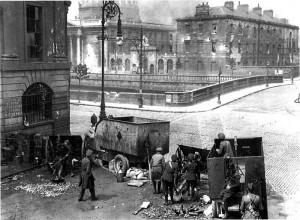
Pro-Treaty Republicans depicted the National Army as the true descendant of the IRA of the War of Independence and later bemoaned that the Army had let in so many British soldiers.
In July 1923, for instance, Liam Tobin led a delegation of ex IRA officers to W.T. Cosgrave declaring that ‘The Army is rotten’. It was he said, ’40 per cent ex IRA 10 per cent ex civilians hostile to the IRA and 50 per cent ex British Army’.[5]
Similarly anti-Treaty Republicans depicted the ‘Free State Army’ as composed of ex British soldiers and apolitical slum dwellers. The men buried at Glasnevin however, if they can be taken as representative of an Army that was 55,000 men strong at its height, do not reflect this analysis.
More of the men buried at Glasnevin had IRA than British Army service, but most had no previous military experience.
Of those whose previous service could be identified, 34 had served in the IRA up to 1921 and at least five had been ‘out’ in the 1916 Rising too, whereas only 21 had served in the British Army and one in the Canadian Army in the Great War. One or two had served in both British forces and the IRA. The great majority of soldiers appear to have had no previous military experience prior to the Civil War.
Among the ex IRA men, some were close to Michael Collins’ followers who were at the heart of the National Army officer corps. One such was Captain John Young who was mortally wounded in an action in Kerry on the 13th of October 1922. He was from the North Strand in Dublin, a riveter by trade and veteran of the IRA Dublin Brigade 2nd Battalion. In pro-Treaty forces he served in the CID detective division, and finally the elite Free State unit the Dublin Guards. His officer commanding was former ‘Squad’ commander Paddy O’Daly and the references to his IRA service on his pension file include Squad men Joe Leonard and Vinny Byrne.
A man with a similar story was Michael Dunne, a tramway fitter from Dublin, who was in the Dublin Guards when it was an IRA unit in 1921, remained in it as it became a National Army unit and who was killed in Kerry in March 1923 by a trap-mine at Knocknagoshel. His death along with that fellow Dublin Guard officer Edward Stapleton (whose name is also on the Glasnevin memorial) triggered a horrific series of reprisals that month on Kerry. [6]
Another poignant case was that of Private Frederick Lidwell Hamilton, who died on the 19th of December 1922, accidentally shot and killed in Kilkenny Barracks. He was from a middle class background in Dun Laoghaire, County Dublin and as well as working as a solicitor’s apprentice, had served in the Dublin IRA’s 6 Battalion and worked as the register of Dun Laoghaire Republican Court, in 1919-1921. His family tried but failed to sue the army for negligence over his accidental shooting.[7]
Among the former British Army soldiers who joined the National Army was Sergeant Patrick Perry, who was killed during the Free State landing at Rochestown in Cork on the 8th of August 1922. He was 24 years old, of Blackrock County Dublin, who, since his discharge from the Irish Guards, had worked as a butcher’s assistant and casual labourer. He had, his file notes, an ‘unmarried wife’ and children.[8]
Perhaps the most striking example of the raw recruits buried at Glasnevin are the McKenna brothers, Gerard and Frederick of Phibsborough in Dublin, aged 17 and 18 respectively, who joined the National Army in July 1922, perhaps in a burst of youthful enthusiasm and who were both killed at Rochestown in Cork on August 8, 1922.[9]
Manner and location of deaths
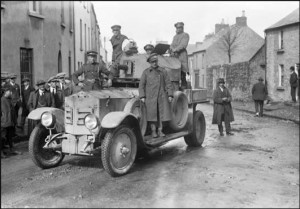
Of the 163 men the circumstances of whose death could be found, 95 were killed by enemy fire. There were another 68 non-combat deaths; eight involving motor accidents and 52 incidents of weapons accidents or ‘friendly fire’ and another 17 due to sickness such as pneumonia or tuberculosis. That is to say, at least 25% of the National Army’s fatalities listed in the monument were accidents and another 10% were due to sickness.
The combat deaths of the men buried at Glasnevin are stacked towards the start of the Civil War when the National Army was tasked with attacking fixed positions. Sixteen of the men buried at Glasnevin died in the fighting in Dublin in the first week of the war when the anti-Treaty IRA was dislodged from the Four Courts and its other positions in the capital. Another nine died in the landing in Kerry on August 2nd 1922 and seven in the landing at Cork on August 8th.
Accidents and sickness account for nearly 30 per cent of all deaths. Most of the combat deaths occurred in counties Dublin, Cork and Kerry.
All in all well over half of the combat deaths listed in the Glasnevin monument occurred in the first three months of the ten month war. Conversely accidents and ill-health claimed more victims as the war dragged on as ill trained troops were garrisoned throughout the country. All of the casualties on the Glasnevin monument that occurred after the IRA ‘Dump Arms’ order of May 24, 1923 were due to accidents or ill-health.
Dublin itself was the most common place of death, 57 of the soldiers buried at Glasnevin died there, though only 26 in action, with fully 16 deaths from accidents and 15 from disease. In part though this is the result of sick or injured soldiers being evacuated to Dublin hospitals where they died.
After Dublin, most soldiers died in County Cork, where 35 men buried at Glasnevin (36 if we count Michael Collins himself) were killed. This is followed by County Kerry where 29 of the soldiers buried at Glasnevin lost their lives.
After this the numbers fall sharply, with 10 killed in County Wexford and eight in Tipperary and Kildare, four in Mayo and Limerick and then one or two in several other counties (see table below).
The monument is testament to the tragic waste of the Civil War.
These totals should not be taken as the total National Army death toll in those regions or even the total number of soldiers from Dublin who died there. For instance, while the Glasnevin memorial lists 57 National Army soldiers who died in Dublin, my own research has found at least 95 soldiers killed there. Some are buried in other graveyards in Dublin, some, due to the forty four year lapse between burials at Glasnevin and the construction of the monument, were probably simply forgotten.
Similarly while 29 Free State soldiers who were killed in Kerry are listed at Glasnevin (not all of whom were from Dublin), the total National Army death toll there was at least 88, of whom at least 27 were from Dublin, according to Tom Doyle’s figures.[10]
In the end though, the Glasnevin National Army memorial is a monument to tragedy and waste of life. No disagreement over the Anglo-Treaty necessitated the terrible loss of young men on both sides.
To take just one final example; Private William Wonlahan of Charlemont Street in Dublin was killed in an ambush near Bandon in County Cork in 1922. His aged father died at Easter time the following year, leaving his mother, Mary, destitute. She, though illiterate, appealed to the Army for financial aid besides the gratuity they paid her on the death of her son. She did not receive it for long, as she herself died in 1924, closing the file.[11]
Like many another National Army soldier, William Francis Wonlahan and his story remains forgotten, un-memorialised by anyone except in the stone in the Army plot at Glasnevin.
Tables
Origin of soldiers
128 from Dublin
12 from Belfast
7 from England, 2 from Liverpool 4 from London, 1 from Weymouth
5 from Scotland (Glasgow).
2 from Kilkenny
2 from Galway
1 from Longford
1 from Leitrim
1 from Louth,
1 from Cavan
1 from Cork.
1 from Tipperary
1 from Kerry
1 from Clare
1 from Kildare.
Location of death by County
Dublin 57
Cork city and county 35
Kerry 29
Wexford 10
Tipperary 8
Kildare 8
Mayo 4
Limerick 3
Waterford 3
Laois 2
Kilkenny 1
Louth 1
Clare 1
Galway 2
Meath 2
Westmeath 1
Figures in the article have been revised with the aid of James Langton, to whom I offer my thanks.
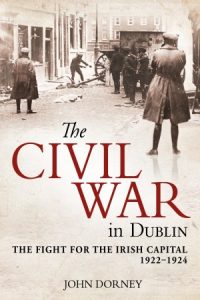
References
[1] Anne Dolan, Commemorating the Irish Civil War, p.4
[2] Ibid. p.128-129
[3] A complete list and sources has been put onto google docs here.
[4] Patrick Lowe, Pension File 2D231, Albert Cottle, Pension file 2D34
[5] Mulcahy Papers P7/B/195
[6] John Young Military Pension file 2D270. Michael Dunne, military pension file, 3D164
[7] Frederick Lidwell Hamilton, Pension File 2D90
[8] Robert Perry Pension File 2D133
[9] Irish Times August 19, 1922.
[10] Tom Doyle the Civil War in Kerry, p.326
[11] William Wonlohan Pension File 2D319